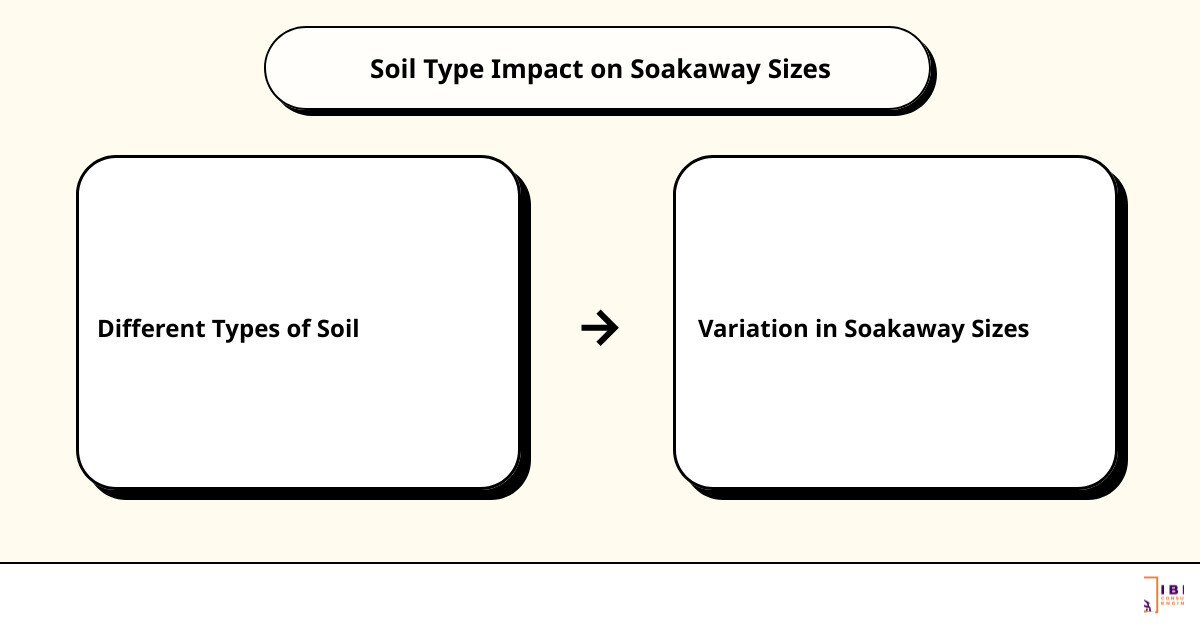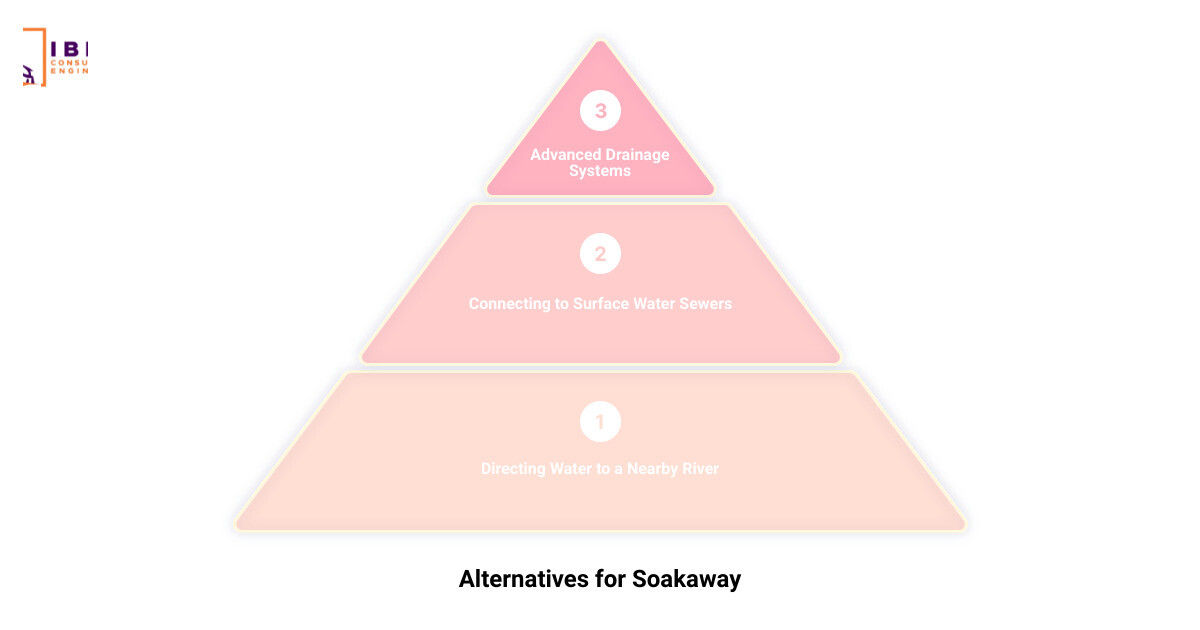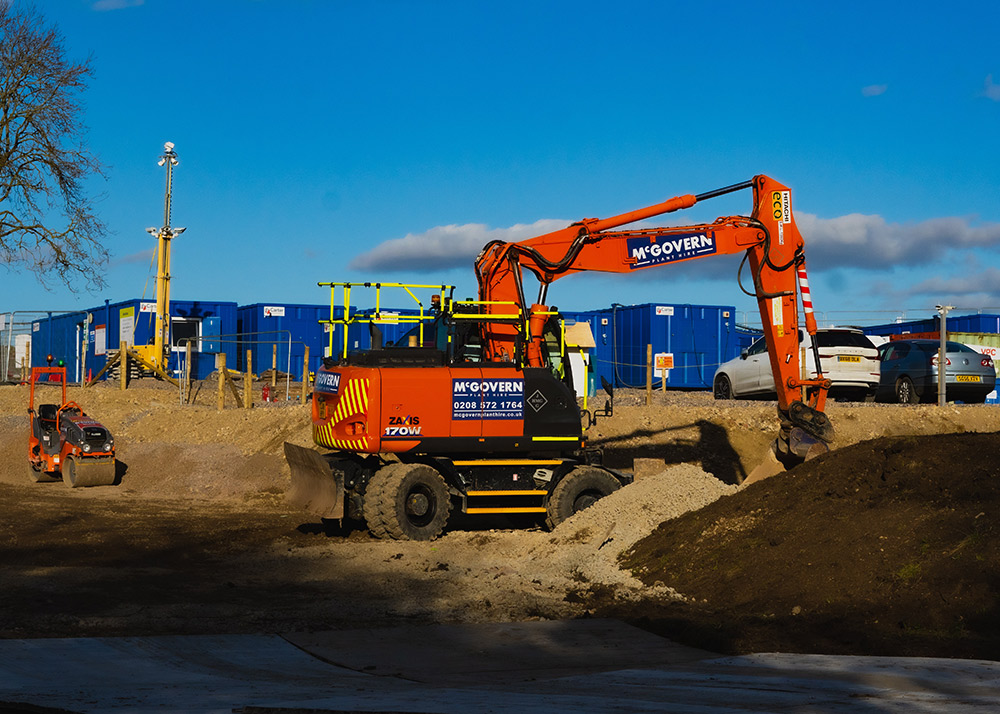
When embarking on a construction project, effective water management is crucial. One of the key components of this is ensuring that any rainwater or surface water can be efficiently drained away, reducing the risk of flooding and water damage. This is where BRE 365 Soakaway testing comes into play.
BRE 365 Soakaway testing is a method used in the UK to evaluate the suitability of the ground for a soakaway system, a common solution for managing surface and foul water drainage. The test essentially measures the permeability of the soil, determining how quickly water can infiltrate into the ground from a soakaway. This information is critical in designing an effective soakaway system that complies with local regulations and building standards.
In this comprehensive guide, we will delve into the intricacies of BRE 365 Soakaway testing. We’ll explain why it’s important, what the testing process entails, how soil types and impermeable surfaces can influence soakaway design, and what alternatives are available when soakaways are not feasible.
Whether you’re a construction project manager in need of reliable and cost-effective geotechnical solutions or a homeowner looking to improve drainage on your property, understanding BRE 365 Soakaway testing can help you make informed decisions that result in efficient, effective water management. So let’s dive in and learn all there is to know about this essential testing method.
Understanding the Importance of BRE 365 Soakaway Testing
Ever been stuck in a situation where torrential rainfall has overwhelmed your property’s drainage system? That’s where the Building Research Establishment (BRE) 365 Soakaway testing comes into play. This testing method, born out of the BRE Digest 365 guidance, helps determine the soil’s water absorption rate. In essence, it tells us how quickly water seeps down through the soil, a critical factor in designing efficient soakaways.
A soakaway is a drainage system that disperses water into the surrounding soil, preventing waterlogging and flooding. They are particularly advantageous in areas prone to heavy rainfall or flooding. However, their effectiveness entirely depends on the ground conditions. If the soil cannot absorb water quickly enough, the soakaway may not function as intended.
That’s where the BRE 365 Soakaway testing comes in. This testing process involves excavating a trial pit, a replica of the intended soakaway, and filling it with water multiple times in quick succession. The percolation rate, or how quickly the water drains, is then measured. These calculations help determine the required size of the soakaway, ensuring it can handle the volume of water expected.
According to the BRE Digest 365, a well-designed soakaway should be able to discharge from full to half-volume within 24 hours. This capacity ensures that the soakaway can provide the necessary run-off support for subsequent heavy rainfall. Without this testing, there’s a risk of installing a soakaway that cannot manage the water volume, leading to potential drainage issues or even flooding.
In short, BRE 365 Soakaway testing is a crucial step in infrastructure planning. Whether you’re a construction project manager handling large-scale developments or a homeowner looking to manage rainwater runoff better, this testing method ensures your soakaway system will be up to the task, promoting effective water management and preventing potential flooding issues.
The BRE 365 Soakaway Testing Process
The BRE 365 Soakaway Testing process is a detailed and meticulous process, designed to ensure the most accurate results for your project’s needs. Let’s break it down into three main stages.
Contacting IBEX Consulting Engineers for Pricing and Project Drawings
The first step in the BRE 365 Soakaway Testing process is to get in touch with the experts. When you reach out to IBEX Consulting Engineers, you’ll discuss your project specifics and agree on a price. You’ll then need to send over your project drawings. This initial step allows the team at IBEX to gain a clear understanding of your needs and tailor their services accordingly.
Conducting On-Site Tests
Once the initial discussions and preparations are complete, the IBEX team will visit your site to conduct the tests. This involves digging holes at the proposed soakaway location and conducting a series of tests according to the BRE 365 methodology. This testing will assess the soil’s permeability, a critical factor in determining the suitability and size of a soakaway system. The IBEX team is mindful of the potential mess involved in this process and strives to minimize disruption on site.
Receiving a Report with Soakaway Size Recommendations
Approximately three days after the on-site tests, you’ll receive a report from IBEX. This report will include the results of the BRE 365 Soakaway Testing, providing you with a clear understanding of the sizes of soakaway required for your project. The report will consider factors such as soil type. For instance, if your site has sandy or gravelly soil, the recommended soakaway size may be small. On the other hand, if you have clay soils, the suggested soakaway size could be larger.
If the results indicate that a soakaway system might not be feasible due to the soil conditions or other factors, don’t worry. The experts at IBEX can help explore alternative solutions, ensuring your project’s water management needs are met efficiently and effectively.
By following this meticulous testing process, IBEX Consulting Engineers can provide you with the most accurate and practical soakaway solutions for your specific needs.
Factors Influencing Soakaway Sizes
When it comes to efficient and effective water management in construction projects, the size of the soakaway plays a vital role. But what factors influence these sizes?

Soil Type and Its Impact on Soakaway Sizes
The type of soil present on your construction site directly impacts soakaway size. Clean, coarse sand is ideal for a soakaway as water flows easily between the grains, resulting in good infiltration rates and smaller soakaway sizes.
However, not all soil is pure sand. Most often, sand is mixed with other elements like clay or silt, which fill the spaces between grains and lower the soakaway rates. For instance, a sandy soil with about 20% clay may still appear sandy when dry, but won’t yield good results in soakaway tests. As clay content increases, the results begin to mirror those of pure clay, necessitating larger soakaways.
The Role of Impermeable Surfaces in Soakaway Design
Impermeable surfaces, such as roofs and driveways, also play a role in soakaway design. In the BRE 365 soakaway method, you account for run-off from any impermeable surface. This means adding up the total area of surfaces with 0% permeability and including this in the model. The larger the impermeable surface, the larger the soakaway needs to be to manage the water run-off efficiently.
Adjusting for Permeable Paving in Soakaway Design
On the other hand, permeable paving can play a positive role in reducing the required size of a soakaway. Instead of a 0% permeability figure, permeable paving allows for a 30% figure to be input into the model. This adjustment reflects the fact that permeable paving lets a portion of the water infiltrate into the ground, reducing the total volume of water that the soakaway has to manage.
In conclusion, the type of soil and the presence of impermeable or permeable surfaces are key factors that determine the size of a soakaway. Understanding these factors helps in designing a soakaway that’s both cost-effective and efficient in managing water run-off from your construction project. At IBEX Consulting Engineers, we have the expertise to guide you through this process, ensuring your project’s success.

Alternatives When Soakaways Are Not Feasible
Despite the many advantages of soakaways, there are times when they may not be the most practical or feasible solution for managing surface water runoff. This could be due to a range of factors, from the nature of the soil to the topography of the land or existing contamination on site. At IBEX Consulting Engineers, we understand that every project is unique, and we’re committed to finding the right solution for your specific needs. When soakaways are not feasible, there are other alternatives that can be considered.
Directing Water to a Nearby River
One possible alternative to a soakaway is directing the surface water to a nearby river. This approach involves collecting the rainfall through different methods, such as using rainwater butts, and then transporting it uphill using buckets or other means to the river. The feasibility of this method largely depends on the proximity of the river to the project site and the logistics involved in transporting the water.
Connecting to Surface Water Sewers
Another alternative is connecting the site to surface water sewers. This option is typically considered when local sewage undertakers allow for such connections. The process involves controlling the outflow from the site, thereby reducing the impact of heavy rainfall events on surrounding surface water systems, whether natural or manmade.
It’s worth noting that the decision to use these alternatives should be carefully considered, taking into account the local regulations, environmental impact, and the specific requirements of your project.
At IBEX Consulting Engineers, we pride ourselves on providing expert advice and solutions tailored to each project’s unique challenges. With our in-depth knowledge of BRE 365 testing and other soil permeability testing methods, we can help you make informed decisions that ensure the success of your project, even when traditional solutions such as soakaways are not feasible.
The Role of BRE 365 in Soakaway Design
BRE 365 Soakaway Testing is an integral part of the infrastructure planning and development process. It plays a pivotal role in determining the feasibility, size, and location of soakaways, which are essential components of effective drainage systems. This methodical testing approach, guided by stringent criteria and specific access requirements, ensures the creation of reliable, efficient, and environmentally sound soakaways.
Meeting the Minimum Criteria for Soakaway Design
One of the primary aspects to consider when designing a soakaway is meeting the minimum criteria set out by BRE 365. Among the many requirements, a crucial one is that the top of the soakaway should ideally be 1m below ground level. If the proposed soakaway doesn’t meet this requirement, it can still be tested and calculated according to BRE 365, but the data may not provide an entirely accurate picture of how the soakaway will perform. The outcome of the test will provide a range of potential soakaway sizes, offering flexibility in choosing the most fitting location and design for the soakaway.
The BRE 365 testing process considers various factors, including regional variations in rainfall, climate change allowances, and soil infiltration rates. All these elements contribute to determining the most suitable soakaway size and design to effectively handle the expected volume of water during a significant rainfall event.
Access Requirements for BRE 365 Testing
Conducting BRE 365 Soakaway Testing requires specific access requirements to ensure accurate and reliable results. Typically, a 2.5-ton digger and an Intermediate Bulk Container (IBC) are utilised for the testing process. In some cases, a breaker may be necessary to penetrate concrete surfaces.
Alongside these, standard soil investigation equipment such as spades, buckets, and a CAT scanner are also used. It’s important to note that the testing process can’t be carried out on contaminated sites, as it may exacerbate contamination issues or introduce them into previously uncontaminated areas.
The success of your construction project largely depends on effective water drainage, and BRE 365 Soakaway Testing is a crucial step towards achieving this. By understanding and adhering to the minimum criteria and access requirements for soakaway design, you can ensure a robust and efficient drainage system, aiding in the longevity and success of your project.
The Longevity and Maintenance of Soakaways
Ensuring the durability and functionality of your soakaways over time is a key aspect of project success that cannot be ignored. A properly designed and installed soakaway is not just a temporary solution. In fact, its lifespan can extend to over a hundred years, proving its effectiveness as a long-term, cost-efficient drainage system.
When installed correctly, a soakaway provides reliable service for at least a century. This impressive lifespan is contingent on satisfying the criteria outlined in the BRE 365 testing, which ensures its structural integrity and functionality. This longevity is a testament to the value of this geotechnical solution, providing a sustainable, efficient drainage system that stands the test of time.
Even though soakaways demand no active maintenance, it’s still beneficial to conduct periodic checks. A quick inspection every few months will help to ensure that everything is functioning as it should be. These checks are straightforward and can be easily incorporated into your regular site maintenance schedule. By doing so, you not only ensure the soakaway’s performance but also prolong its lifespan.
The low-maintenance nature of soakaways, combined with their considerable lifespan, makes them an appealing option for many construction projects. However, it’s important to remember that the successful installation and longevity of a soakaway hinge on rigorous BRE 365 testing. This testing ensures that the soakaway is correctly designed and installed, and that it’s suited to the specific geotechnical conditions of the site.
At IBEX Consulting Engineers, we not only offer comprehensive percolation testing, but a range of other geotechnical testing services as well, including WAC testing and asbestos removal. Contact us to learn more about our BRE 365 testing and soakaway installation services, and how we can assist in ensuring the longevity and effectiveness of your soakaways.
In conclusion, the longevity and minimal maintenance requirements of soakaways underline their value in infrastructure projects. With the correct testing and installation, a soakaway is a long-term solution that provides efficient drainage for your site, contributing to the overall success and sustainability of your project.
Conclusion: The Value of BRE 365 Soakaway Testing in Infrastructure Projects
After a comprehensive overview of the process, it’s clear that BRE 365 Soakaway Testing holds immense value in infrastructure projects. As construction project managers, understanding the importance of this testing method can be instrumental in ensuring the success of your project.
Firstly, it helps in creating a robust and efficient soakaway system. This system, designed according to the BRE 365 guidelines, ensures optimal water runoff handling, thereby preventing any potential water-related damage to your project. The testing process provides vital information that aids in the design and construction process, bringing efficiency and cost-effectiveness to the table.
Secondly, it aids in understanding the site conditions better. By identifying soil types and their permeability, the BRE 365 Soakaway Testing helps in making informed decisions. Whether it’s a sandy soil that might require a smaller soakaway or a clay soil that might need a larger one, this testing method provides clarity on what to expect and how to prepare.
Thirdly, the testing results also guide decisions on alternative water disposal methods when soakaways are not feasible. This can include directing water to a nearby river or connecting to surface water sewers. In this way, BRE 365 Soakaway Testing ensures that no stone is left unturned in the quest for the best possible drainage solution.
Lastly, this testing method plays a crucial role in meeting the relevant legal and environmental requirements. By adhering to the guidelines laid out in the BRE Digest 365, you ensure compliance with regulations, thus avoiding potential legal complications.
In essence, BRE 365 Soakaway Testing, when conducted by experienced professionals such as IBEX Consulting Engineers, can provide a substantial return on investment. It’s not just about ticking a box on the compliance checklist; it’s about building a sturdy, efficient, and sustainable infrastructure project that stands the test of time.
The beauty of soakaways lies in their simplicity, their sustainability, and their effectiveness. With the right testing and installation, they can be a long-term solution that provides efficient drainage for your site, contributing to the overall success and sustainability of your project. So, the next time you’re embarking on a construction project, remember the value of BRE 365 Soakaway Testing and the significant role it plays in ensuring the success of your infrastructure project.

